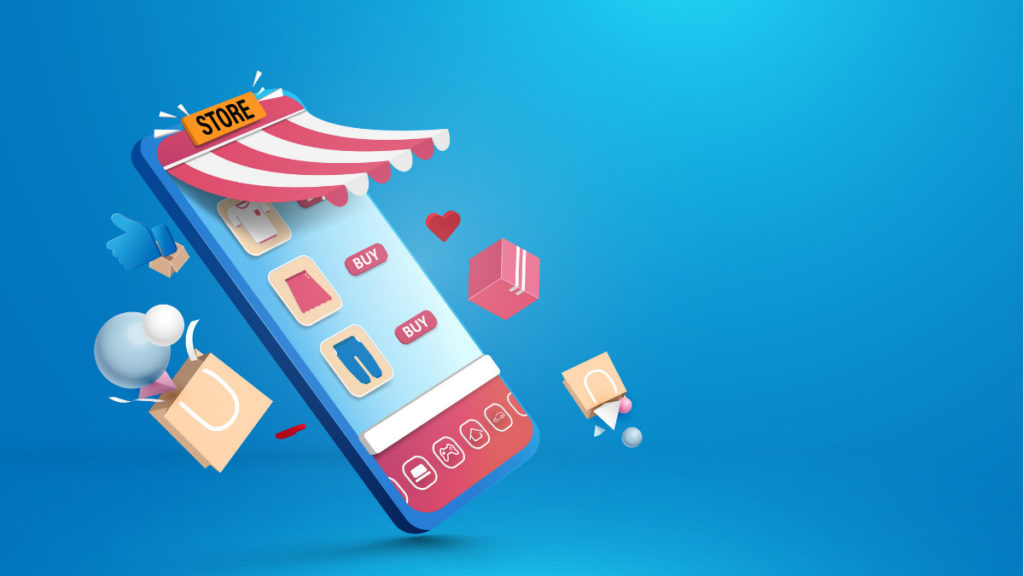6 ways to create the best ecommerce customer experience


The reason? Poor customer experience.
73% of consumers point to customer experience as a factor in their purchase decisions.
Think about your most recent online retail transactions. If you had a pleasant experience with a company, you would likely return to shop or recommend the brand to a friend.
But, if you had a negative experience, chances are you would simply walk away. You’re not alone.
More than half of U.S. consumers have abandoned a planned purchase due to poor experiences.
A positive shopping experience ultimately leads to more sales. Companies that lead in retail customer experience grow their revenues much faster than laggards.
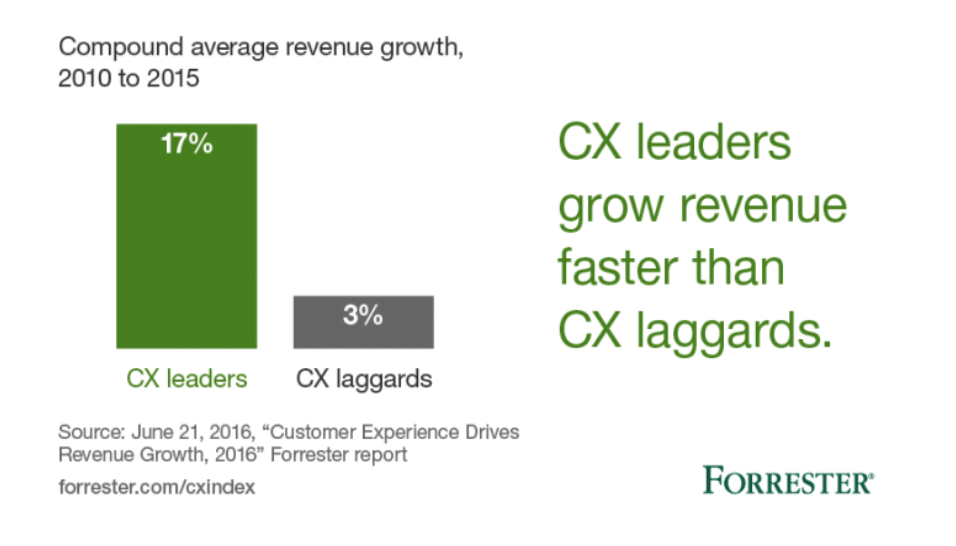
Enhance the overall customer experience to increase sales for your ecommerce store.
Here we’ll look at why customer experience matters and what steps you can take to make a great impression on your visitors.
Why does ecommerce customer experience matter?
Ecommerce continues to experience explosive growth year after year. Global e-retail sales are estimated to hit 2.8 trillion dollars by 2021.
That represents a massive opportunity to build and grow an online business. But, make no mistake: The ecommerce industry is incredibly competitive.
To distinguish your brand, you need to prioritize customer service. That means going above and beyond to exceed your customers’ expectations. Here’s why ecommerce customer experience matters:
Customers pay higher premiums for positive experiences
Delivering excellent customer service doesn’t just increase sales.
In some cases, it even affects how much people pay. Customers are willing to pay higher price premiums for certain items and services simply because they had a great positive customer experience.

The caveat, of course, is that customers aren’t willing to pay more unless their expectations are met or exceeded.
Utilizing an Amazon repricer, you can get a baseline sense of your market’s willingness to spend. From there, you can adjust pricing based on what experience you can deliver.
Customers are more loyal to customer-centric companies
87% of customers who had a great experience with a company were more likely to make a purchase again in the future. In contrast, just 18% of customers who had poor experiences said they would return to make another purchase.
Companies spend five times more to bring in new customers than to retain existing ones. So, delivering a great customer experience to improve retention rates makes business sense.
Poor customer experience leads to brand switching
Brand switching occurs when a loyal customer deliberately switches over from one brand to another. Customers often switch brands because of negative experiences.
89% of consumers purchased from a competing business after a poor experience. That’s not the worst part. Those negative experiences have ripple effects. 26% of consumers posted a negative comment on a social network site like Facebook or Twitter.
Your business cannot afford to ignore the customer experience. Otherwise, you risk losing sales and customers to competing businesses.
Customer experience vs. user experience
Gartner defines customer experience as “the practice of designing and reacting to customer interactions to meet or exceed their expectations, leading to greater customer satisfaction, loyalty, and advocacy.”
In other words, it’s the lasting impression that a customer has with a company.
You can probably think of many instances where you left a business with a poor taste in your mouth. Likewise, you can also probably think of different times when a company has exceeded your expectations.
Zappos takes customer experience to a new level. While many companies want to end customer support calls as quickly as possible, Zappos has unlimited call times. Their longest call is 10 hours and 51 minutes!
There are many stories of Zappos going the extra mile to help their customers. The decision to prioritize customer experience has paid off for the company many times over.
Lexico defines user experience as “The overall experience of a person using a product such as a website or computer application, especially in terms of how easy or pleasing it is to use.”
Have you ever excitedly purchased a product only to be disappointed with it? Not only was it poorly made, but it was also frustrating to use. That’s an example of poor user experience.
Other examples of poor website user experience include:
- Cluttered page layouts
- Slow loading times
- Intrusive ad pop-ups
- Inconsistent page designs
- Confusing navigation structure
- Site not optimized for mobile
- Small or illegible typography
All of these make it difficult for users to follow through on their actions. In contrast, optimizing the user experience of your ecommerce site makes it easier for visitors to complete their purchase.
There is some overlap between customer experience and user experience.
6 ways to enhance your online store’s customer experience
9 out of 10 startups fail. To prevent your business from becoming another statistic, you can gain a competitive edge by prioritizing customer experience. Here’s how you can delight your customers and get them coming back:
1. Use personalization techniques
49% of buyers have made impulse buys after having personalized shopping experiences. Implement these personalization techniques in your store to meet the individual needs of your customers:
Personalized homepages
Go to Amazon and scroll down the page. Chances are your homepage is different from mine:
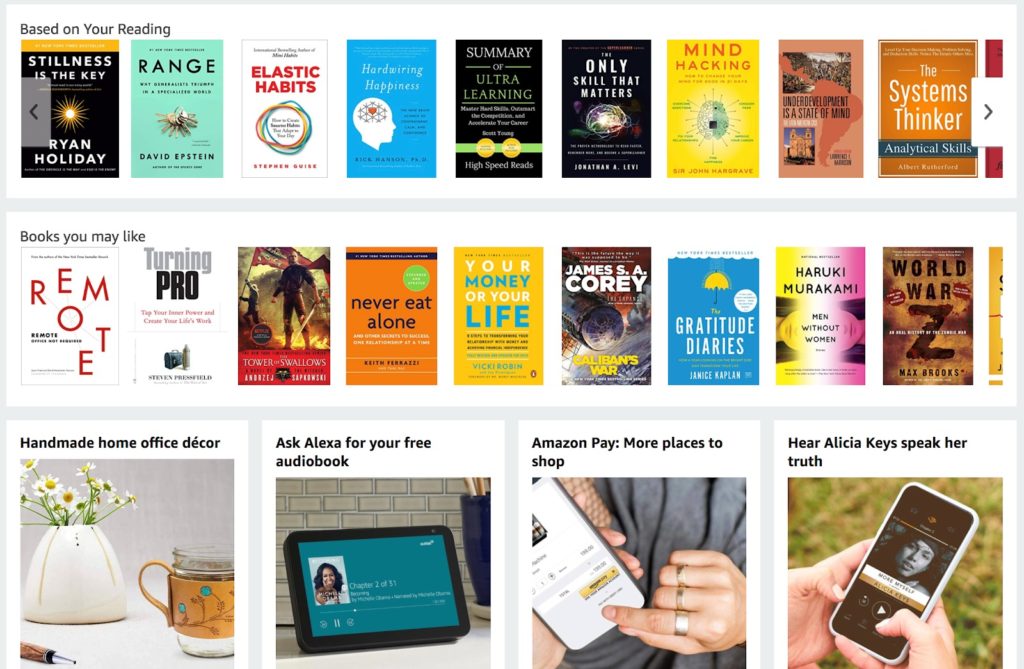
That’s because Amazon uses algorithms to make each shopper’s homepage more personalized based on factors like their order history. You can take a similar approach with your store by displaying recommended products on a user’s home page based on the products they’ve purchased or have clicked on.
Display recently viewed items
Shoppers may view several items, but may not add the items to their shopping carts. You can gently nudge shoppers to do so by displaying items that they have previously viewed.
Newegg displays recently viewed items on the bottom of the homepage and product pages:
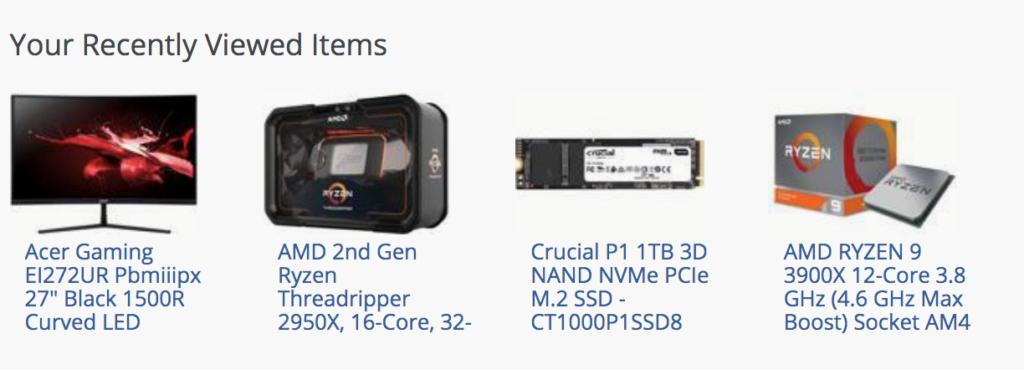
Get personal in content creation and email marketing
Delivering a more personalized shopping experience isn’t just limited to your products and recommendations.
You can also utilize personalization techniques to drive measurable results with your email and content marketing campaigns.
For example, emails with a personalized subject line generate 50% higher open rates. Customize subject lines, personalized email signatures, and greetings with individual names when you send out marketing emails.
When it comes to content marketing, be sure to create content that appeals to your audience.
For instance, if you are selling sleep items, create content that compels people to buy. What would that entail? Take Each Night as an example, who creates sleep studies using real data to show how important sleep health is:
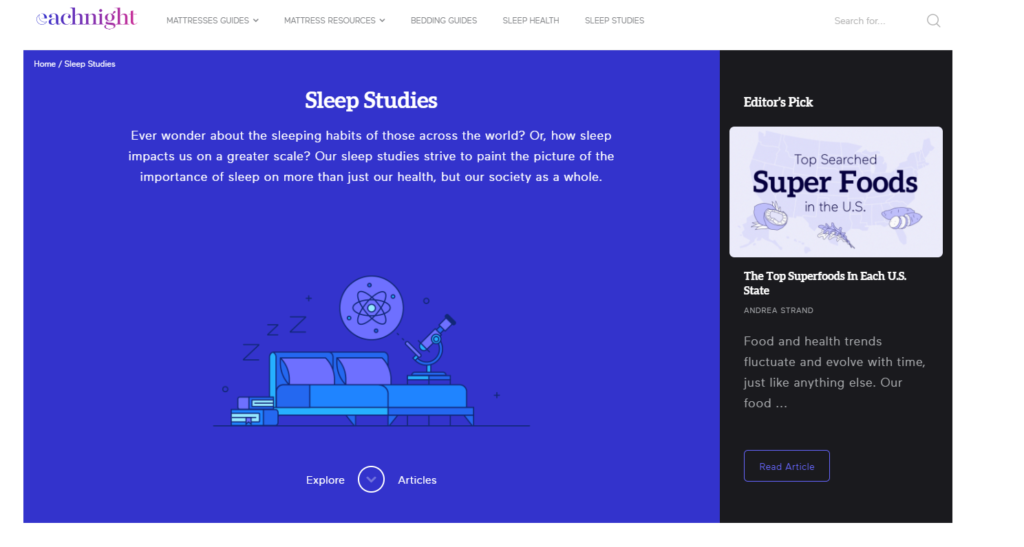
This data can help clear up any potential questions and even directly drive buying decisions.
2. Make products easy to find
Visitors should be able to find what they’re looking for without having to jump through any hoops. Here’s how:
Product categorization
Product categorization means grouping products together based on similar categories. Organize your products into relevant categories. Be sure to include a menu at the top of each page.
Barnes & Nobles makes it easy for visitors to browse books based on subjects and other categories:
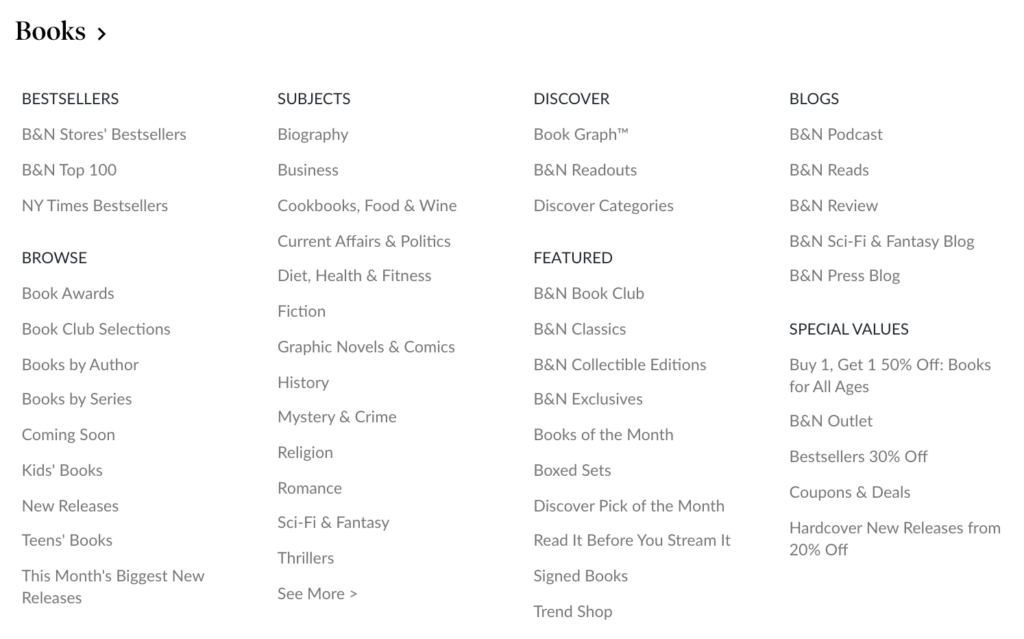
How you organize your products will depend on your niche, as you may need several categories and subcategories.
Product filtering
Product filtering allows shoppers on your site to refine their product search even further. This helps shoppers narrow down their search and find exactly what you’re looking for.
For example, “Men’s boots” is a rather broad category. Zappos includes product filters on the left-hand side to help shoppers narrow down their search based on attributes like size, brand, price, color, and more.

Implement product filtering on your store to facilitate your visitors’ search for the perfect product.
3. Create a hassle-free checkout process
Customers are incredibly fickle. If there are any obstacles, they are more likely to abandon their shopping carts. Here’s how you can optimize the checkout process:
Don’t make account registration compulsory
28% of shoppers have abandoned a cart because the site wanted them to create an account. Give new shoppers the option to checkout with a guest account.
Make it clear that registration is an option, so visitors don’t feel pressured to create an account. But, you can also point out that customers can check out faster as registered customers if they return for subsequent visits.
Show checkout progress
The checkout page is an important page on your site. It’s where customers can complete and pay for their purchases. However, 21% of shoppers abandon their carts because the checkout process was too long or too complicated.
Visitors should be able to complete the checkout process from start to finish on one page. However, if you split the checkout process into multiple pages, be sure to include a progress bar so shoppers can see how far along they are.
Amazon displays a progress bar at the top of its checkout page:

Use autofill
Shoppers want to check out as quickly as possible. However, it can be slow and frustrating to fill out forms, especially on mobile devices. Implement autofill functionality in your online store to minimize the amount of time required to complete a purchase.
4. Integrate a responsive customer service
It’s ideal to think that all customers who visit your store will add products to their shopping carts and complete their purchases. Unfortunately, this isn’t always the case. Some customers may have additional questions before they’re ready to pull the trigger.
Here are some ways you can integrate responsive customer service into your site:
Live chat
Live chat allows customers to type out their questions directly from their browser and communicate with a representative without having to call or send an email.
If you implement this option, respond quickly to your customers. Otherwise, they may exit the page if they’re left staring at a blank chat box.
Chatbots
It can be overwhelming to keep up with customer support inquiries. Chatbots are applications that use natural language processing to understand and respond to common queries.
Here’s how HubSpot uses chatbots to help visitors find what they’re looking for:
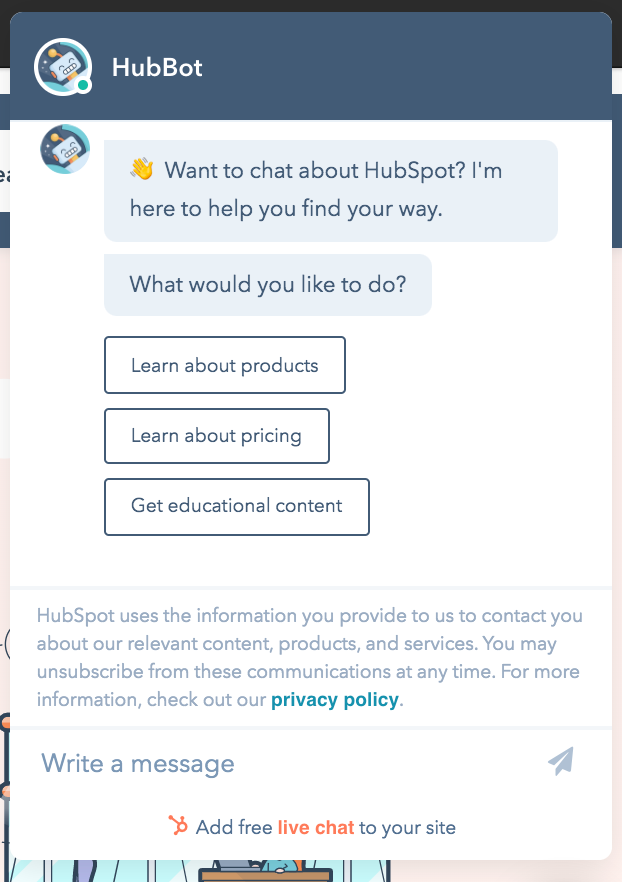
Utilize a chatbot to help your visitors receive answers to frequently asked questions.
Social media response
Customers increasingly turn to social media platforms to get help with their inquiries. Keep a close eye on your profiles and respond to any comments as quickly as possible. 85% of customers expect a response within six hours on Facebook.
5. Be mobile-friendly
63% of adults use mobile devices a few times a month for customer service. However, you need to optimize the mobile experience to make it easy for your visitors to maneuver around your site.
Here are the top issues that users have experienced while seeking information from a mobile device:

With 51.5% of global traffic conducted on mobile devices, you simply cannot afford to overlook mobile. Implement a responsive design to make your site accessible across all devices.
6. Build the best product pages
Your product pages will do all the heavy lifting in convincing visitors to purchase from your store. Here’s how you can build product pages that convert:
Great product descriptions
Online shoppers can’t physically hold your products in their hands. Instead, they have to rely on the product description to help with their decision. A good product description is one that describes the features and benefits of your product.
The key is to educate your visitors, so they know what to expect when they order. Be sure to also optimize your product descriptions for SEO to improve their rankings in the search results.
Visually pleasing
46.1% of consumers assess the credibility of a site based on its overall visual design. If your product pages are poorly designed, you risk visitors bouncing without bothering to learn more.
Apple offers an excellent example of a visually pleasing product page:

How to check your ecommerce customer experience?
Measuring how customers perceive your online store can be difficult to quantify. However, there are several methods you can use. Here’s how:
1. Customer loyalty and retention
Keep a close eye on customer retention rates. If customers are returning to do business with you, it’s a good indication that your efforts to improve the overall customer experience are working.
2. Conduct a customer satisfaction survey
The best way to measure your ecommerce customer experience is to ask your customers directly. Use a tool to create surveys and forms.
Once you finish creating your survey, use an email outreach template to help you craft emails that get responses. Read through any feedback you receive to see what you can do to improve the overall customer experience.
Conclusion
The key to staying competitive in ecommerce isn’t just to have a wide selection of products or the lowest prices. Customers are increasingly willing to do business with companies that prioritize customer experience.
Implement the recommendations in this article to enhance your online store’s customer experience and drive revenue growth.


